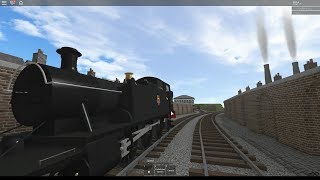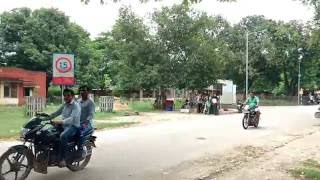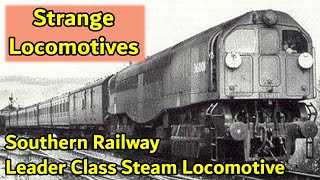Sunday, 11 January, 2026г.
















Где искать: по сайтам Запорожской области, статьи, видео ролики
пример: покупка автомобиля в Запорожье
Indian Train Simulator- WAM-4, WAG-9 Crash
Indian Train Simulator
Loco - WAM-4 (DOUBLE)
No Coaches
Route- Mathura To New Delhi
Indian Train Simulator Download Link-
https://play.google.com/store/apps/details?id=com.HighbrowInteractive.IndianTrainSim
Indian locomotive class WAM-4
Page issues
The Indian locomotive class WAM - 4 is a very successful class of 25 kV AC electric locomotives used in India. The first member of the class was indigenously designed and built by CLW in 1970. The class was produced until 1983.
Indian WAM - 4
WAM-4 hauling Jan Shatabdi Express
Type and originPower typeElectricBuilderChittaranjan Locomotive Works, IndiaBuild date1970-1983Rebuild date1978-1983 to WAG-5SpecificationsConfiguration:
• UICCo′Co′Gauge5 ft 6 in (1,676 mm)Axle load18.8 tonnes (18.5 long tons; 20.7 short tons)Electric system/s25 kV 50 Hz AC ACOverheadCurrent pickup(s)PantographPerformance figuresMaximum speed110 km/h (68 mph) 135 km/h (84 mph)Power output4,850 hp (3,620 kW)Tractive effort33,840 kgf (331.9 kN; 74,600 lbf)CareerOperatorsIndian RailwaysNumbers20400-20699, 21200-21399NicknamesAnanth,RAJATABHA,Surubhi,Navchetna,Sukh Sagar NaveenLocaleAll over India
The locomotives in the class feature rheostatic braking, and MU capability. They use the same power bogies as the successful WDM-2class of diesel-electric locomotives. Being designed specially for mixed traffic, the WAM-4 class has rendered excellent service. Now, most of these are used exclusively for passenger traffic. This class proved so successful by virtue of its ruggedness suitable for Indian conditions and simplicity of maintenance, that IR used this basic design for a number of other locos later (WCAM-1, WAG-5A, WCG-2, and some WAP models). A single WAM-4 can generally haul up to a 24-coach passenger rake. However, with the advent of new 3-phase locos like WAP - 5 and WAP - 7, the WAM - 4 locomotives were relegated to hauling smaller passenger trains. Also, due to the aging fleet the WAM - 4 locomotives are being rapidly scrapped and withdrawn from mainline duties.
This loco class has been seen in many variations, as a lot of workshops and sheds have carried out their own enhancements or modifications to the basic loco design. This loco has the widest variety of liveries, with each loco shed having its own livery. Although the code indicates a mixed-use loco, most WAM-4's ended up hauling passenger trains. They have been used for regularly hauling freight only in a few locations (Arakkonam - Renigunta, Kirandul-Kottavalasa and other SER sections). Max. speed 110 km/h.Variants include WAM-4P D (dual brakes), WAM-4P R (??), WAM-4P DB 6P, WAM-4 6P DB HS, and WAM-4 6P D (these are for superfast trains), WAM-4P DB 3P and WAM-4 2S-3P (some superfasts, passengers), and WAM-4P DB 4P (generally for stopping passengers). The 'DB' or 'D' generally, but perhaps not always, indicates dual-brake capability. 'HS' may be for 'high speed'.'2S', '3P', '6P', etc. indicate traction motors connected in series or parallel. The WAM-4 has six traction motors, and originally they were wired to be available in different configurations at different power settings. At notches up to 14, all motors were in series (at notch 14 all resistors dropping out); up to notch 21 in series-parallel combinations (three pairs of motors in series, the pairs themselves being in parallel); and further notches with all motors in parallel (at notch 30 all motors are in parallel with resistors dropping out). This is the original configuration of the WCAM-x series of locos too. The WAM-4 locos were later reconfigured to have all motors always in parallel (6P variants) or with the three series-connected pairs in parallel (2S 3P variants). Some WAM-4 locos from CLW are thought to have had the 2S 3P configuration right from the start. The 2S 3P configuration was better for the mixed traffic loads especially as it allowed the locos to start hauling larger loads without stalling. With increasing use of the WAM-4 locos for passenger traffic the all-parallel configuration was deemed more desirable since it allowed higher speeds and higher acceleration.
Most of the WAM-4 locos now have their MU capability disabled as RDSO disapproves of these locos running MU'd over 100 km/h.
Indian locomotive class WAG-9
WAG-9 is a type of electric locomotive used in India. It is the most powerful freight locomotive in Indian Railways' fleet. It is very similar to WAP-7; the only major difference being the gear ratio which makes it suitable for heavy freight operations. In November 1998, Chittaranjan Locomotive Works (CLW) started producing these with indigenous components. The first one, 'Navyug' (translated, 'New Era'), was flagged off on November 14. Like the WAP-5 units, they have GTO thyristor converters and 3-phase asynchronous motors.
WAG-9[1]
An Ajni-based WAG9 hauling freight near Warangal
Type and originPower typeElectricDesignerABB GroupBuilderChittaranjan Locomotive Works
Electric Locomotive Works, BhusawalBuild date1996 till
Похожие видео
Мой аккаунт


 У вашего броузера проблема в совместимости с HTML5
У вашего броузера проблема в совместимости с HTML5


